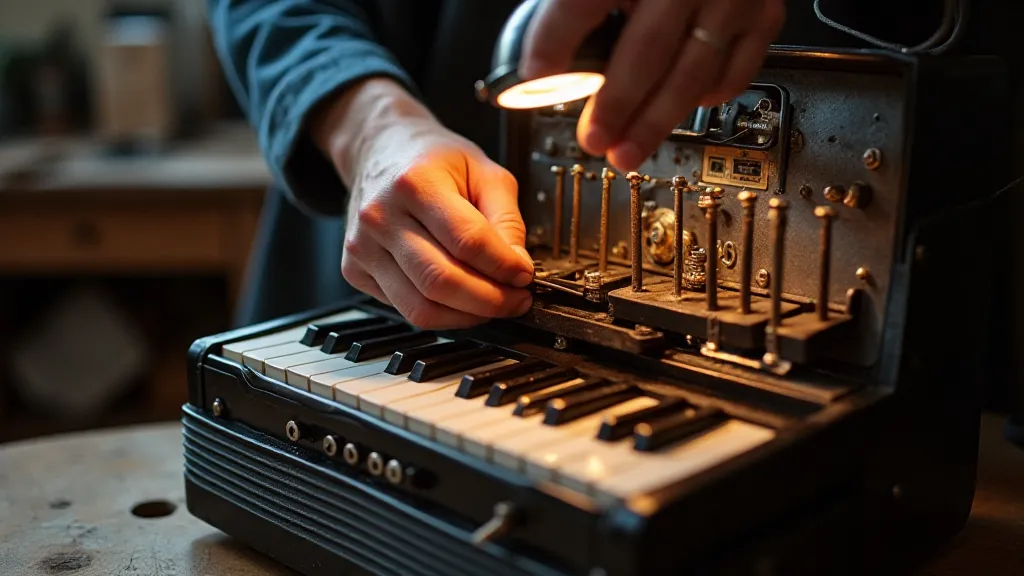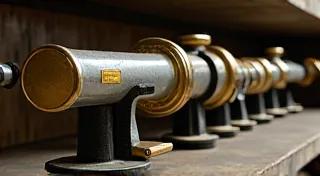Telescope Maintenance: Preserving Your View of the Cosmos
There's a quiet beauty in age, isn’s there? A profound resonance that echoes from the past. I often think of antique accordions when I consider the longevity of a well-crafted telescope. I inherited my grandfather's accordion – a Hohner Vega, its bellows slightly stiff, its keys a little yellowed. He played it at weddings, family gatherings, and just for himself, filling our home with joyous music. The care he took of it, the gentle cleaning, the occasional repair – it wasn’t just about preserving an instrument; it was about honoring a legacy, maintaining a connection to the man himself. A telescope, in many ways, is similar. It’s a window to the universe, a vessel carrying years of observations and wonder, and deserving of the same reverence and care.
A telescope isn't just a collection of lenses and mirrors; it's a carefully engineered piece of equipment, often embodying decades, or even centuries, of scientific and optical advancement. From the early refracting telescopes of Galileo to the immense, modern reflectors probing the edges of our observable universe, each instrument represents a triumph of human ingenuity. The journey from simply observing the night sky to truly understanding what we see often begins with a single, well-maintained telescope, and the desire to delve deeper into the mysteries above. Neglecting the upkeep of your telescope is akin to leaving that accordion gathering dust in an attic – its potential for joy, for connection, diminishes with each passing year.

The Anatomy of Care: Cleaning Your Telescope
Dust, humidity, and even the oils from our fingers can slowly degrade a telescope’s performance. Cleaning is, therefore, the cornerstone of telescope maintenance. But it's a delicate process that requires patience and the right approach. Don’t go at it with a vigorous scrub! Think more of a gentle restoration.
Lenses and Mirrors: The Sensitive Souls These are your telescope’s most critical components. For lenses, use a dedicated lens cleaning solution and microfiber cloths. These cloths are specifically designed to remove dust and grime without scratching the delicate surface. A few gentle passes are all that’s needed. Don't overdo it. Excessive cleaning can do more harm than good. Mirror cleaning is even more critical. Often, a simple blower brush is sufficient to remove loose dust. If you must use a cleaning solution, use one specifically designed for mirrors, and apply it sparingly with a cotton swab. Never rub aggressively.
The Tube and Mount: Keeping the Whole System Clean The telescope tube, often made of aluminum or composite materials, can accumulate dust and grime. A soft cloth dampened with a mild soap solution is usually enough to keep it clean. The mount, particularly if it's a sturdy equatorial mount, deserves similar attention. Remove any accumulated dirt and lubricate moving parts according to the manufacturer’s instructions. Regular lubrication helps prevent rust and ensures smooth operation.
Storage: Protecting Your Investment
Proper storage is almost as important as regular cleaning. Think of your accordion again – would it thrive left exposed to sunlight and fluctuating temperatures? No! Telescopes are sensitive to environmental conditions, and protecting them is essential for preserving their longevity.
The Ideal Environment: Cool, Dry, and Dark The best storage environment is cool, dry, and dark. Avoid direct sunlight, which can damage optics and degrade materials. Humidity can lead to corrosion and mold growth. Temperature fluctuations can cause lenses to fog up and warp. If you don't have dedicated storage space, consider using a custom-fitted telescope cover to shield it from the elements.
Orientation Matters: Preventing Distortion When storing your telescope, it’s generally recommended to store it vertically. This prevents stress on the optics and minimizes the risk of distortion. Always refer to your telescope’s manual for specific storage recommendations. Some refractors, in particular, may require specific orientations to prevent lens separation. Understanding the nuances of different telescope designs – particularly when considering their optical performance – can be a fascinating journey. For those eager to learn more about the intricacies of these instruments, exploring the effects of chromatic aberration can be a rewarding experience. Consider delving into A Poet's Guide to Refractor Telescopes to further your knowledge.
Beyond the Basics: Periodic Maintenance
Beyond regular cleaning and storage, certain periodic maintenance tasks can significantly extend your telescope’s lifespan. These tasks might require a bit more expertise, but the rewards are well worth the effort. Imagine the satisfaction of bringing an old accordion back to its original vibrancy – that same sense of accomplishment can be found in restoring a telescope to its prime.

Collimation: Aligning the Light Path For reflector telescopes, collimation is crucial. Collimation refers to the alignment of the mirrors. Misaligned mirrors result in blurry images. You can learn to collimate your telescope yourself with the help of online tutorials and collimation tools. However, if you’re uncomfortable performing this task, it’s best to take it to a professional.
Lens Separation: A Refractor’s Challenge Older refractors can sometimes experience lens separation – a condition where the internal lenses drift apart. This is a serious issue that requires professional attention. Regular inspection can help identify this problem early on.
Lubrication: Keeping Things Moving Smoothly As mentioned earlier, periodic lubrication of moving parts is essential. Consult your telescope’s manual for specific lubrication recommendations. Use lubricants specifically designed for astronomical equipment, as other lubricants may damage the optics.
The allure of the night sky and the desire to unravel its mysteries often leads beginners down a path of astronomical exploration. The transition from casual stargazing to a dedicated pursuit of cosmic understanding is a remarkable journey, and it’s often spurred by that first glimpse through a telescope. Beyond the Naked Eye: A Gradual Ascent to Cosmic Revelation provides a deeper look into that transformative experience.
Expanding Your View: Eyepieces and Magnification
It’s important to remember that a telescope’s capabilities aren’t solely defined by its aperture and focal length. The choice of eyepiece significantly impacts the magnification and overall viewing experience. Each eyepiece offers a unique perspective of the cosmos, influencing factors such as field of view, brightness, and sharpness. Experimenting with different eyepieces is a key aspect of mastering your telescope and uncovering the hidden wonders of the universe. Understanding how different eyepieces affect your observations is a crucial step in maximizing your telescope’s potential – a topic explored further in A Journey Through Magnification.
The Legacy of Observation
Owning a telescope isn’t just about acquiring a piece of equipment; it’s about embracing a legacy of scientific discovery and wonder. It’s about connecting with the universe and appreciating the beauty of the cosmos. Just as my grandfather cherished his accordion, passing down a tradition of music and joy, we can pass on a love of astronomy to future generations by taking care of our telescopes. A well-maintained telescope can become a family heirloom, a tangible link to the vastness of space, a source of endless fascination and inspiration.
Consider the telescopes that have shaped our understanding of the universe – the instruments that revealed the moons of Jupiter, the rings of Saturn, the vastness of distant galaxies. These telescopes represent the culmination of centuries of scientific progress and human ingenuity. By taking care of our own telescopes, we’re not just preserving a piece of equipment; we’re safeguarding a window to the cosmos, ensuring that future generations can continue to explore the wonders of the universe.

So, take a moment to appreciate your telescope. Clean it gently, store it carefully, and cherish the opportunity to gaze upon the universe. Your telescope is more than just a machine – it’s a portal to the cosmos, a testament to human curiosity, and a legacy to be preserved.





